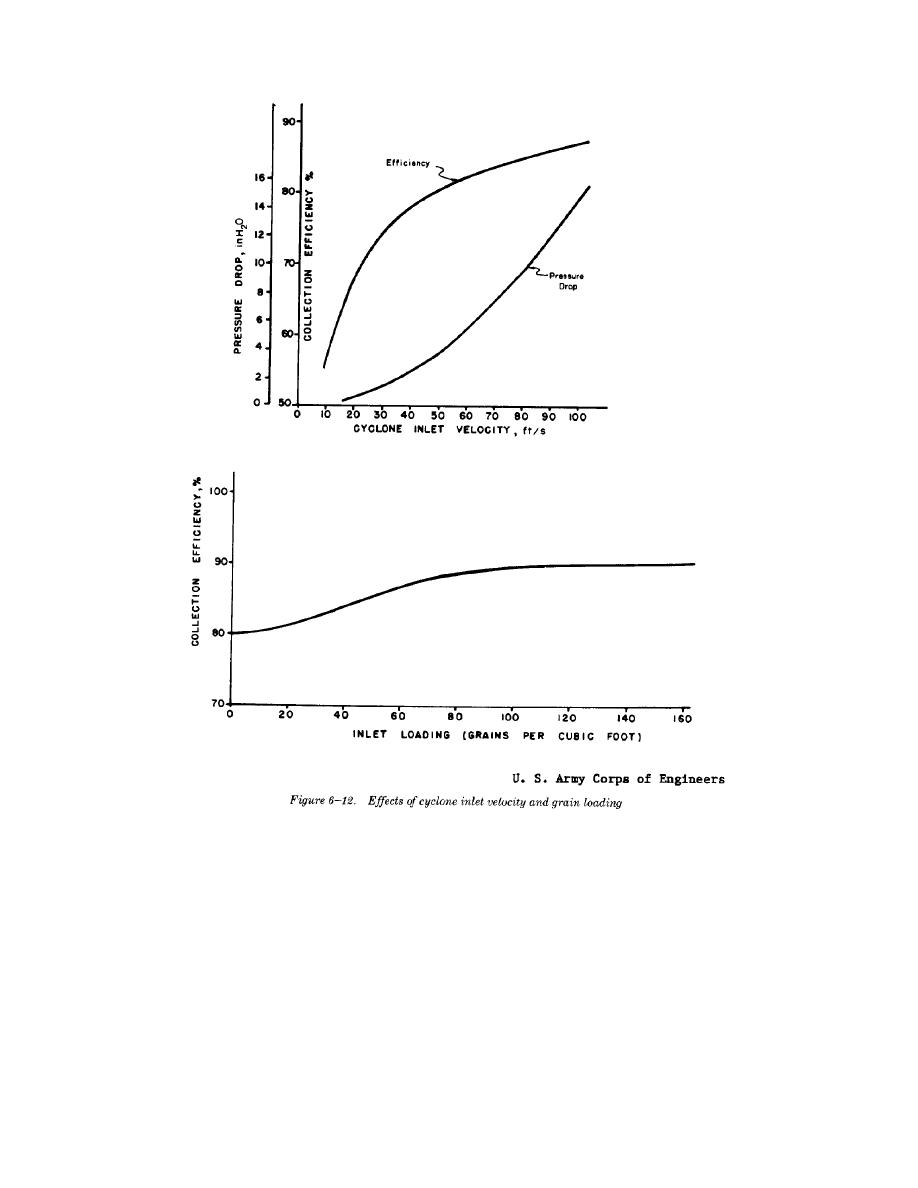
TM 5-815-1/AFR 19-6
materials on the cyclone wall. Dust outlets become
sulfur oxides or hydrogen chloride are subject to acid
plugged by large pieces of extraneous material in the
corrosion. Acids will form when operating at low gas
system, by overfilling of the dust bin, or by the break-
temperatures, or when the dust hopper may be cool
off of materials caked on the cyclone walls. The
enough to allow condensation of moisture. Corrosion
buildup of sticky materials on the cyclone walls is
is usually first observed in the hopper or between
primarily a function of the dust properties. The finer or
bolted sections of the cyclone inlet or outlet plenum
softer the dust, the greater is the tendency to cake on
spaces where gasketing material is used and cool
the walls. Condensation of moisture on the walls will
ambient air can infiltrate. Corrosion at joints can be
contribute to dust accumulations. The collector should
minimized by using welded sections instead of bolted
therefore be insulated to keep the surface temperature
sections. Ductwork and hoppers should be insulated
above the flue gas dew point. Wall buildup can
and in cold climates the hoppers should be in a weather
generally be minimized by keeping the gas inlet
protected enclosure. Heat tracing of the hoppers may
velocity above 50 ft/sec.
be necessary.
6-14


 Previous Page
Previous Page
